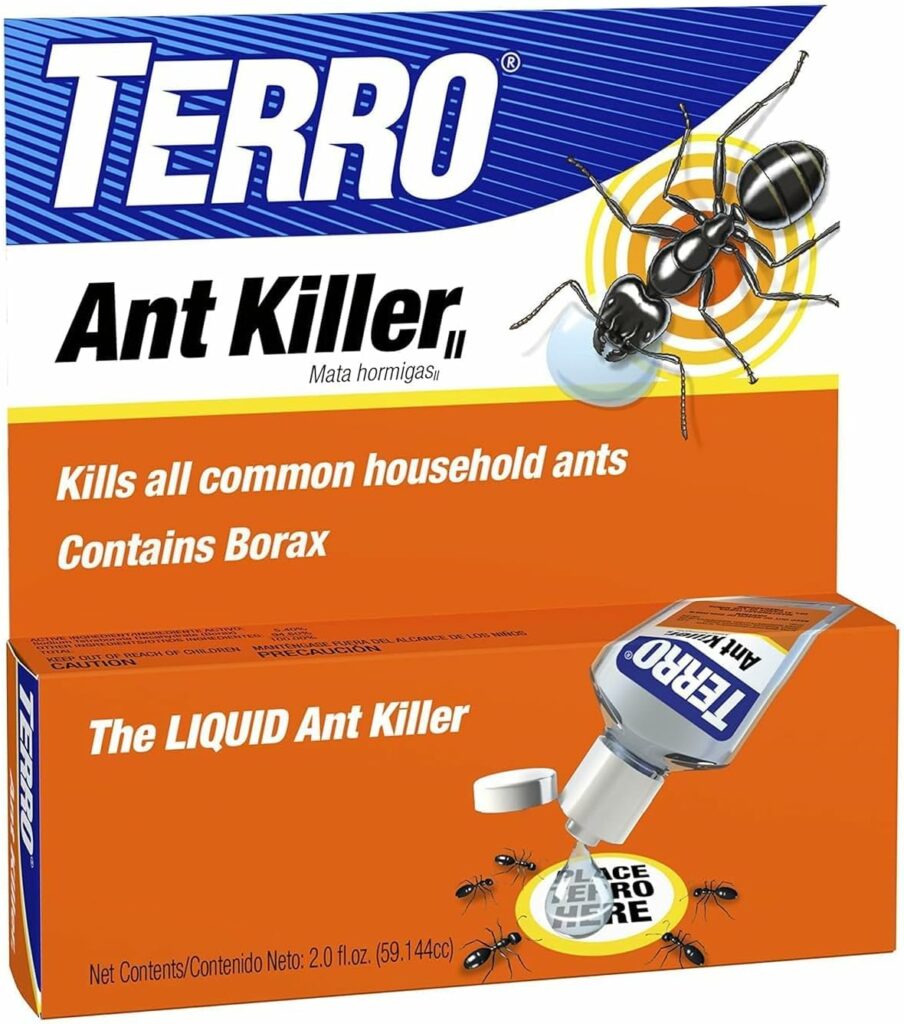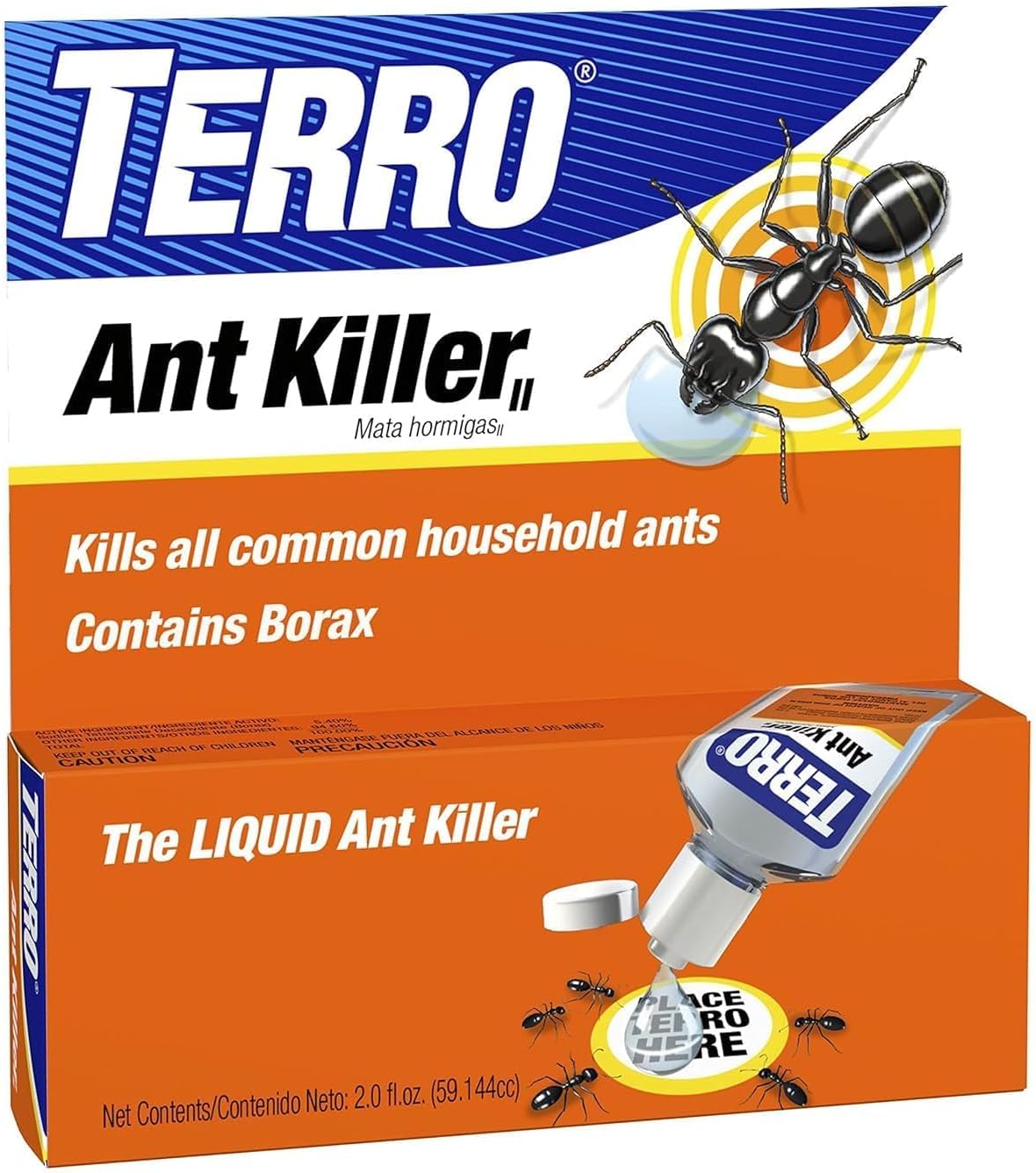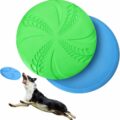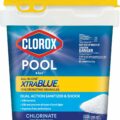Imagine this: you’re relaxing in your cozy living room, a cup of warm tea in hand, when suddenly you notice a trail of ants marching across your floor. Panic sets in as you realize your home has become an all-you-can-eat buffet for these tiny invaders. Or perhaps you’re hosting a summer barbecue in your garden, and the sight of ants swarming your picnic dishes ruins the festive atmosphere. We’ve all been there, and it’s a frustrating experience, to say the least. But what if I told you there’s a definitive guide that could transform this nightmare into a thing of the past?
Welcome to our ultimate guide on the best indoor and outdoor ant killer and traps. This blog post isn’t just about quick fixes or temporary solutions; it’s about arming yourself with the knowledge to reclaim your living spaces from these persistent pests effectively and safely. From products that are tough on ants but gentle on pets, to innovative traps that work seamlessly both indoors and outdoors, we’ve scoured the market to bring you the top choices. So sit back, relax, and prepare to discover how to take back control of your home and garden, making them ant-free zones once and for all.
Understanding the Ant Invasion: What Attracts Ants Indoors and Outdoors
Before we dive into the best indoor and outdoor ant killer and traps, it’s important to understand what attracts ants in the first place. By knowing their preferences, we can take proactive measures to prevent infestations.
Ants are attracted to food sources, particularly sweet and sugary substances. They have an incredible sense of smell that allows them to detect even the tiniest crumbs or spills. Inside your home, ants may be drawn to open food containers, dirty dishes, or even pet food left out overnight. Outdoors, they can be attracted to fallen fruits, garbage cans, or compost piles.
To discourage ants from entering your living spaces, it’s crucial to keep your surroundings clean and free of potential food sources. Regularly wipe down countertops and sweep floors to remove any traces of food particles. Store food in airtight containers and promptly clean up spills or crumbs. Outside, make sure your garbage cans have tight-fitting lids and keep your garden tidy by promptly removing fallen fruits or vegetables.

How We Selected the Best Ant Killers
When selecting the best indoor and outdoor ant killers for this guide, we considered several factors:
- Efficacy: We looked for products that are proven to effectively eliminate ants.
- Safety: Our top priority was finding ant killers that are safe for use around pets and children.
- Ease of use: We considered products that are user-friendly and convenient to apply.
- Durability: Long-lasting solutions were favored over temporary fixes.
We also took into account customer reviews and feedback to ensure that the ant killers we recommend have a track record of success.
Indoor Ant Killer: Safe and Effective Products for Your Home
Dealing with ants indoors requires a targeted approach. You want an ant killer that is both safe for use around your family and pets, while also being effective at eliminating the infestation. Here are some of the best indoor ant killers:
These indoor ant killers are specifically formulated to target ants while minimizing any potential risks to humans and pets. They come in various forms, such as sprays, baits, or powders, allowing you to choose the option that suits your preferences and needs.
When using indoor ant killers, it’s important to follow the instructions carefully. Place baits or spray along ant trails or near entry points to intercept them effectively. Remember to keep these products out of reach of children and pets.
Outdoor Ant Killer: Solutions for Your Garden and Yard
If you’re dealing with ants in your garden or yard, you’ll need outdoor-specific ant killers. These products are designed to withstand outdoor conditions while effectively eliminating ants.
Outdoor ant killers often come in granular form or as ready-to-use sprays. Granular options can be spread around the perimeter of your garden or near anthills, creating a barrier that repels ants. Sprays can be used directly on anthills or areas where ants are congregating.
When applying outdoor ant killers, make sure to read and follow the instructions provided by the manufacturer. Take precautions not to harm beneficial insects or plants in your garden.
Pet Friendly Ant Traps: Keeping Your Furry Friends Safe
If you have pets at home, it’s essential to choose ant traps that are pet-friendly. These traps are designed to attract ants while keeping your furry friends safe from any harmful substances.
Pet-friendly ant traps usually contain a bait that is irresistible to ants but poses no threat to pets. They are typically placed in areas where ants are commonly found, such as near food bowls or along ant trails. These traps work by luring ants inside and trapping them, preventing further infestation.
When using pet-friendly ant traps, ensure they are inaccessible to your pets. Place them in areas where your pets cannot reach or knock them over.
All About Indoor Ant Baiting
Indoor ant baiting is a highly effective method for eliminating entire ant colonies. It involves placing bait stations containing attractive food mixed with slow-acting insecticides.
The worker ants carry the bait back to the colony, where it is shared with other members, including the queen. This leads to the eventual eradication of the entire colony.
Indoor ant baits come in various forms, such as gel baits or pre-filled bait stations. Follow the instructions provided by the manufacturer for optimal results. It’s important not to disturb or remove the bait stations until the infestation has been completely eliminated.
Best Non-Toxic Ant Killer
If you prefer non-toxic solutions for dealing with ants, there are several options available:
Non-toxic ant killers often use natural ingredients like essential oils or plant-based compounds to repel or eliminate ants. These products are safe for use around children and pets while still being effective at controlling infestations.
When using non-toxic ant killers, it’s important to note that they may require more frequent applications compared to traditional insecticides. Follow the instructions provided by the manufacturer for optimal results.
Type of Ant Killer
There are different types of ant killers available, each with its own advantages and considerations:
- Sprays: Ant killer sprays offer quick and direct control over individual ants or visible ant trails. They are convenient for spot treatments but may not provide long-term solutions.
- Baits: Ant baits are effective at targeting entire ant colonies. They work by attracting ants to consume a toxic substance, which is then shared with other members of the colony.
- Granules: Granular ant killers are typically used for outdoor applications. They can be spread around the perimeter of your home or near anthills to create a barrier that repels ants.
Consider the specific needs of your situation when choosing the type of ant killer that will work best for you.
The Best Areas To Put Ant Traps
To maximize the effectiveness of ant traps, it’s important to place them in strategic locations where ants are likely to encounter them. Here are some key areas to consider:
- Near entry points: Place ant traps near doors, windows, or any other openings where ants may enter your home.
- Along ant trails: If you notice a trail of ants inside your home, place traps along their path to intercept them.
- Near food sources: Set up traps near areas where food is stored or prepared, such as pantries or countertops.
By strategically placing ant traps in these areas, you increase the chances of intercepting ants and preventing further infestation.
Long-Term Ant Control Strategies: Preventing Future Infestations
While ant killers and traps are effective at eliminating existing infestations, it’s equally important to implement long-term strategies to prevent future ant problems. Here are some tips:
- Keep your home clean: Regularly clean up spills, wipe down countertops, and sweep floors to remove any food particles that may attract ants.
- Seal entry points: Inspect your home for any cracks or gaps where ants can enter. Seal them with caulk or weatherstripping to prevent access.
- Trim vegetation: Keep shrubs, trees, and other vegetation trimmed away from your home’s exterior. This reduces the likelihood of ants finding their way indoors.
- Store food properly: Use airtight containers to store food and keep pet food dishes clean. This eliminates potential food sources for ants.
By implementing these preventive measures, you can significantly reduce the risk of future ant infestations in your home or garden.
Expert Tips for Using Ant Killer and Traps Effectively
To get the most out of your ant killer and traps, consider these expert tips:
- Familiarize yourself with the product: Read the instructions provided by the manufacturer carefully before using any ant killer or trap. Understanding how to use it correctly will maximize its effectiveness.
- Maintain cleanliness: Even with ant killers in place, it’s important to maintain a clean environment. Regularly clean up spills and crumbs to discourage ants from returning.
- Be patient: Ant killers and traps may take some time to eliminate an entire colony. Be patient and allow the products to work their magic.
- Monitor and reapply: Keep an eye on the effectiveness of your ant killers and traps. If you notice ants returning, reapply or replace the products as needed.
By following these expert tips, you can ensure that your chosen ant killer and traps are used effectively for long-lasting results.
What are some effective ant traps for indoor use?
When it comes to indoor ant traps, there are several highly effective options available. Look for ant traps that contain a potent bait that attracts ants while being safe for use around pets and children. Some popular choices include [specific product names]. These traps are designed to lure ants in with their irresistible bait, trapping them inside and preventing further infestation.
How do I get rid of ants that keep coming back after trapping them?
If you find that ants keep coming back even after trapping them, it may indicate a larger underlying issue. Here are some steps you can take:
- Identify the entry point: Inspect your home for any cracks or gaps where ants may be entering. Seal these entry points to prevent further access.
- Clean thoroughly: Ensure your home is clean and free of any food sources that may be attracting ants. Wipe down surfaces, sweep floors, and store food properly.
- Reevaluate your ant killer or trap: Consider switching to a different type or brand of ant killer or trap if the current one is not effectively eliminating the infestation.
If the problem persists, it may be necessary to consult with a professional pest control service for further assistance.
What is the best and safest way to get ants out of your kitchen?
To get ants out of your kitchen, follow these steps:
- Identify and eliminate food sources: Thoroughly clean your kitchen, removing any crumbs or spills that may be attracting ants. Store food in airtight containers.
- Seal entry points: Inspect your kitchen for any cracks or gaps where ants may be entering. Seal them with caulk or weatherstripping.
- Use ant traps: Place ant traps near areas where ants are commonly found in your kitchen, such as countertops or near the sink.
If the infestation persists or worsens, consider using an indoor ant killer specifically formulated for use in kitchens. Follow the instructions provided by the manufacturer for optimal results.
By following these steps, you can effectively and safely get rid of ants in your kitchen.


